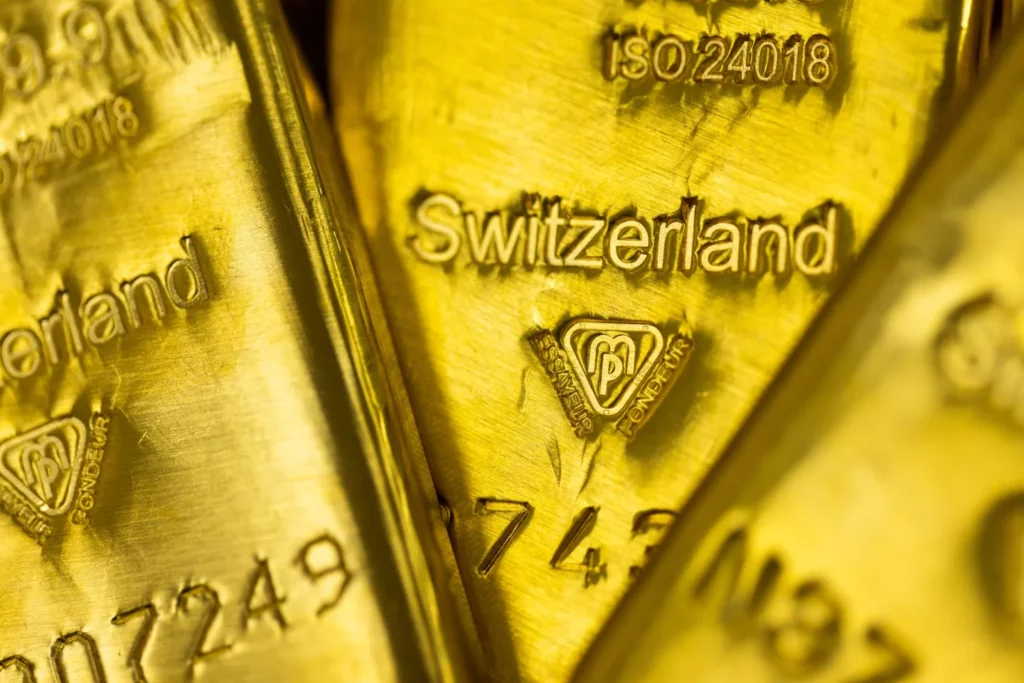The Trump-Putin summit is now in the books. No deal has been reached to end the war in Ukraine yet. Still, the meeting marked a significant shift.
The most valuable outcome was that President Trump had the opportunity to hear President Putin directly — without the filter of advisers or hawkish voices in the room. That one-on-one exchange created the foundation of a peace process, something Putin has long sought.
Today, all eyes turn to Trump’s next round of talks with President Zelensky and European leaders. What happens there could determine whether this opening evolves into a genuine pathway to peace.
At BitVision, we’ll continue tracking these developments closely and will provide deeper analysis on tomorrow’s VIP quarterly call.

I. Trump Turns the Tables on Political Debanking
One of the most underreported shifts in Washington is Trump’s move against political debanking. For years, banks have used “reputational risk” as an excuse to shut down accounts — not only of suspected criminals, but also of individuals with politically sensitive views.
The Trump family itself was debanked by JPMorgan and Bank of America. Now, the White House is moving decisively to end the practice. Regulators are being instructed to impose fines on banks that debank customers for political reasons, and legislation is being prepared to make these protections permanent.
For ordinary Americans, this is not a political story. It is a financial one. Debanking cuts off access to credit, payments, and even basic savings. Trump’s intervention signals that the practice is likely to collapse — a win for financial inclusion.
II. Accountability Arrives for Trump’s Critics
The long list of investigations, impeachments, and lawsuits aimed at Trump largely failed. Now, the focus is reversing. Criminal investigations are reportedly underway targeting New York Attorney General Letitia James and U.S. Senator Adam Schiff.
Both figures were central players in what Trump’s allies describe as “lawfare” — weaponizing the legal system to pursue political ends. These cases will take time, but the message is clear: accountability for past attacks on Trump is gaining traction.
For investors, this backdrop matters because it signals a more aggressive dismantling of the old guard — with implications for regulation, enforcement, and the broader balance of political power.
III. An Executive Order That Reshapes Washington
Buried in the headlines is perhaps the most important development of all: Trump’s August 7, 2025, Executive Order, “Improving Oversight of Federal Grantmaking.”
This order disrupts how the U.S. government funds NGOs and international programs. Under the old system, billions of taxpayer dollars were funneled into organizations with questionable agendas — from politically activist groups to controversial overseas projects.
Now, Trump has installed loyal appointees to oversee grants directly. They can halt, delay, or cancel once automatic funding streams. For markets, this represents a profound structural change. It signals a redirection of U.S. resources away from globalist programs and toward domestic priorities.
IV. Tariffs on Switzerland — and the Gold Question
On April 8, Trump unveiled a sweeping tariff package. While the EU faced moderate tariffs, and Brazil and Canada were hit harder, the surprise came with Switzerland: a 39% tariff on refined gold bars and luxury goods.
Switzerland refines but does not mine gold. By taxing its exports, Trump effectively disrupted a global middleman. Swiss gold shipments to the U.S. are now uneconomic, which will likely redirect flows elsewhere and tighten supply.
The implication? Higher global gold prices. Investors positioned in gold stand to benefit, whether or not Trump intended this as part of his broader trade strategy.

V. Why Luxury Watches May Thrive, Not Suffer
Tariffs on Swiss luxury watches — including Rolex, Patek Philippe, and others — will raise prices. But here, economics takes a counterintuitive turn. Watches are a Veblen good: items where higher prices can increase demand by boosting exclusivity.
For the ultra-wealthy, a 39% tariff is not a deterrent. It is a badge of rarity. As history shows, higher prices in luxury often attract more buyers, not fewer. Investors in luxury retail should note: margins may improve.
📊 Market Impact Snapshot
- Gold: Swiss supply disruption likely lifts global gold prices. Bullish for long-term holders.
- Banking: Debanking crackdown reduces risk of politically motivated account closures. Pro-consumer, potentially bearish for compliance-heavy banks.
- Luxury Goods: Swiss watch tariffs raise prices but may drive demand for exclusivity. Neutral-to-positive for top brands.
- Global Trade: Switzerland singled out, signaling Trump’s tariffs are both economic and political. Expect volatility in U.S.-Europe trade flows.
- Policy Shift: Executive Order on grantmaking redirects federal money inward. Positive for domestic industries tied to U.S. infrastructure and security.
